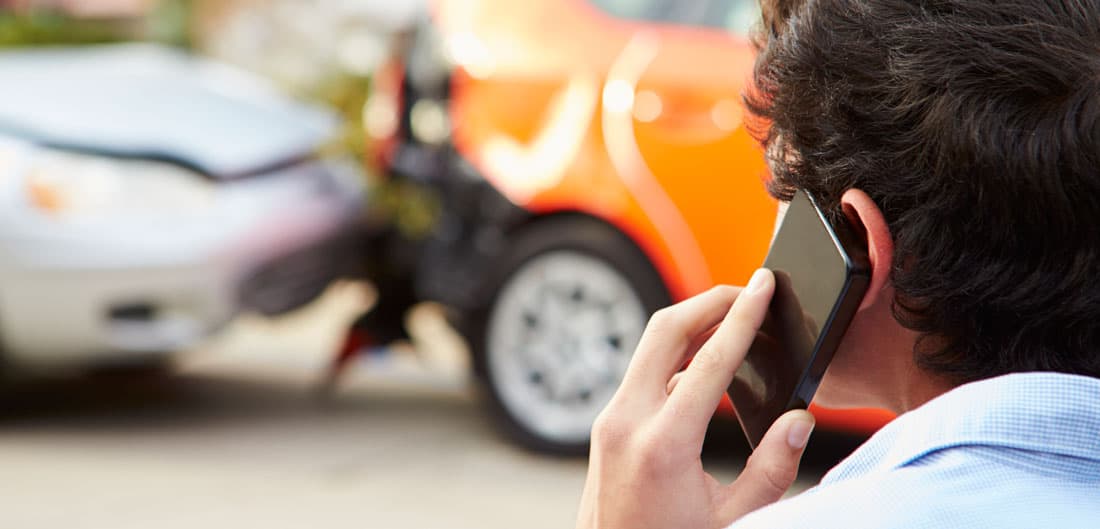Car insurance may be required in nearly every state. But that doesn’t mean every driver has coverage.
The Insurance Research Council reports that one in seven drivers lacks coverage. Some states have much higher rates for uninsured drivers—for instance, 28 percent of Mississippi drivers lack insurance. Rates vary by state for many reasons, including how strict enforcement is and how stiff penalties are.
No matter where it happens, a run-in with an uninsured driver could mean major trouble. “If you’re in an accident with someone who has no insurance or not enough insurance, your only options are to look to your insurer— or to your wallet,” said Dave Freeman, vice president of personal lines underwriting at Erie Insurance.
A tale of two drivers
To illustrate, consider the hypothetical example of David and Katie. David smashes into Katie’s car after running a red light, which damages her vehicle and sends her to the hospital with serious injuries. Here are some ways Katie, the not-at-fault driver, would be covered if she had $18,000 of car damage, $50,000 of medical bills and injuries that prevented her from working for two months. In this example, Katie has no uninsured or underinsured motorist coverage.
Situation 1: David has enough coverage. If David had $300,000 of bodily injury liability and $100,000 of property damage liability, Katie’s car damage and injuries would be fully covered. David’s bodily injury liability coverage will also reimburse Katie for the two months she couldn’t work.
Situation 2: David has the state minimum liability coverage. Most states require drivers to have a minimum amount of auto insurance to cover the injuries and property damage they’re responsible for. But those limits are typically low, which can leave injured, not-at-fault drivers vulnerable.
Let’s say David and Katie’s accident happened in a state with minimum liability requirements of $25,000 per individual injured in an accident and $7,500 for property damage, and David only bought only the minimum coverage. If David didn’t have enough personal assets to cover the rest of Katie’s claim, she would be stuck with $37,500 in uncovered medical bills, $10,500 in uncovered car repair bills and no reimbursement for the two months she wasn’t able to work.
Situation 3: David does not have any auto insurance (or David is a hit-and-run driver). The only way Katie can recover any money from David is to sue him. This often doesn’t help because drivers who don’t purchase insurance or who take out a bare-bones policy usually don’t have many assets in the first place. Katie could potentially be stuck with the entire bill.
What’s a driver to do?
In situations two and three, Katie would greatly benefit from these three coverages:
- Uninsured motorist bodily injury protection covers damages that you and the passengers in your vehicle sustain when an uninsured (or a hit-and-run) driver is at fault. This coverage includes medical expenses, lost wages, and pain and suffering, and it may be mandatory, subject to waiver, in some states. New York is a no-fault state, meaning that drivers in an accident can file a claim with their insurance company regardless of who is at fault. Even still, it’s recommended to have uninsured and underinsured coverage if you live in a no-fault state.
If Katie had this coverage in situation three, she would have received enough money to cover her hospital bill and her two months of lost wages. She would also have the option of filing a claim for her pain and suffering, up to the limit of her policy.
- Underinsured motorist bodily injury protection covers the same things when the at-fault driver doesn’t have enough insurance to pay your bills. If Katie had this coverage in situation two, the $37,500 in medical bills that David’s policy didn’t cover would be covered up to the limits of her policy.
- Uninsured/underinsured motorist property damage pays for your vehicle repairs or a replacement car if you’re hit by someone without any or enough insurance coverage. There are five states in Erie Insurance’s footprint that automatically include this protection in collision coverage: Pennsylvania, North Carolina, New York, West Virginia and Wisconsin. Collision coverage is optional, so it’s a good idea to add it to your policy if you live in one of these states. (In some cases, it makes sense to also purchase uninsured/underinsured motorist property damage.) If Katie had this coverage in situations two and three, she would have had enough money for repair or replacement of her car, up to the limit on her policy.
It’s important to note that your health insurance policy is not a full-proof guarantee if you’re injured by an underinsured or uninsured driver. That’s because you might have a large deductible. You could also exceed your maximum limit. When you have your own coverage, you won’t have to stress about these things or about suing an uninsured or underinsured driver to recover damages.
Break the law, pay the price
You may wonder why you need to insure yourself against uninsured drivers who break the law. Rest assured that anyone caught driving without insurance feels the sting. Uninsured drivers face penalties that can include suspension of their driver’s license or registration, traffic tickets, hefty fines and/or points on their license.
Some states also enforce “no-pay, no-play” laws that prevent uninsured drivers from collecting damages from insured drivers or make uninsured drivers pay the equivalent of a large deductible before they can sue for property damages or bodily harm.
If you’re not sure that you’re protected against all the uninsured drivers out there, contact a local Assure America agent in your community. He or she can tell you about available coverage options in your state that give you protection and peace of mind.




Post Your Comment